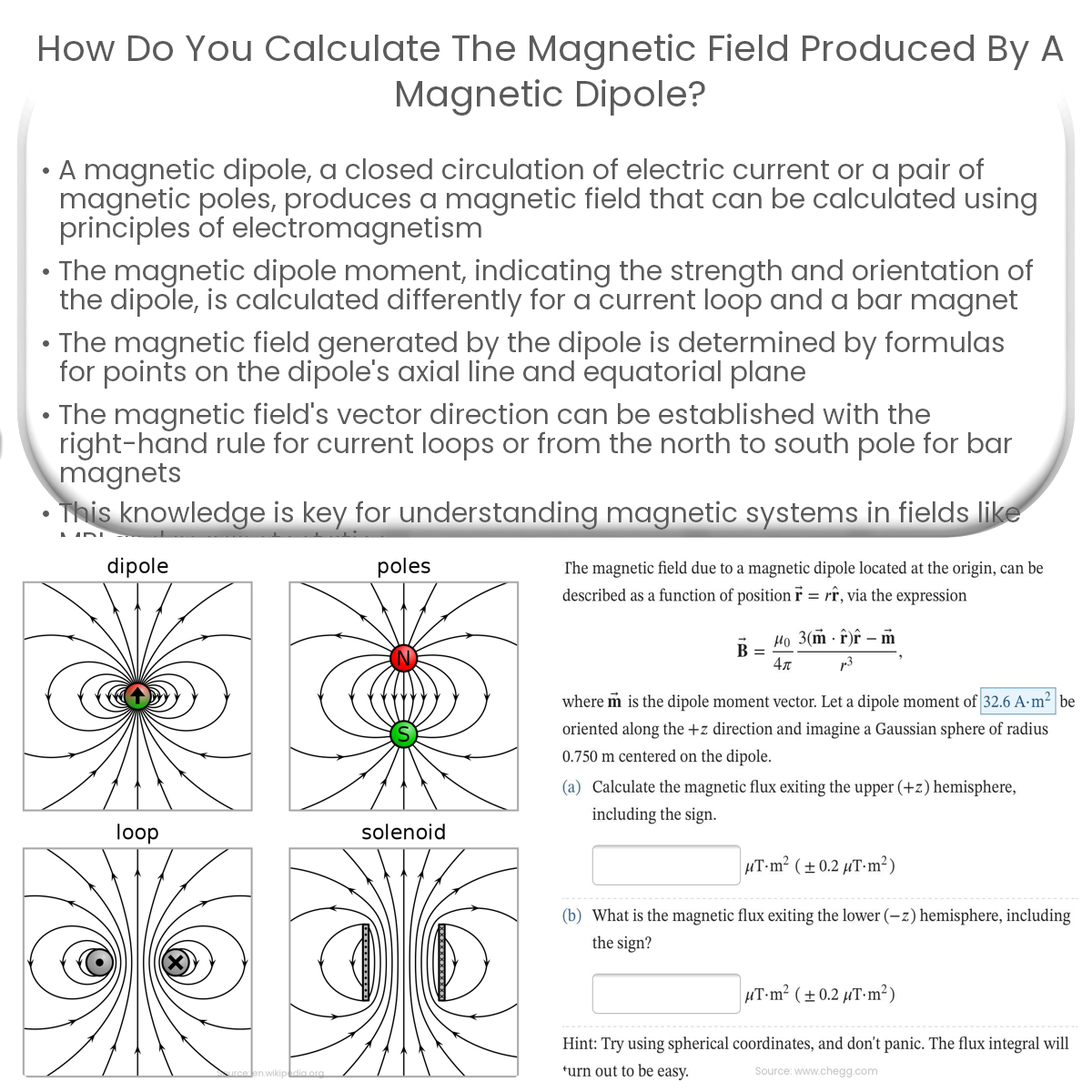To calculate a magnetic dipole’s field, determine the dipole moment and use formulas for axial or equatorial fields, considering the field’s vector nature.
Calculating the Magnetic Field Produced by a Magnetic Dipole
A magnetic dipole is a closed circulation of electric current or a pair of magnetic poles with equal magnitudes but opposite polarities, separated by a small distance. The magnetic field produced by a magnetic dipole can be calculated using mathematical formulas derived from the principles of electromagnetism. This article explains the process of calculating the magnetic field produced by a magnetic dipole.
1. Magnetic Dipole Moment
The magnetic dipole moment (µ) is a vector quantity that characterizes the strength and orientation of a magnetic dipole. For a current loop, the magnetic dipole moment can be calculated using the formula:
µ = nIA
-
n: Number of turns in the loop
-
I: Current flowing through the loop (A)
-
A: Area of the loop (m²)
For a bar magnet, the magnetic dipole moment can be calculated using:
µ = mL
-
m: Magnetic pole strength (Am)
-
L: Distance between the poles (m)
2. Magnetic Field Produced by a Magnetic Dipole
The magnetic field (B) produced by a magnetic dipole can be determined using the following formulas:
For a point on the dipole’s axial line:
Baxial = (µ₀ * µ * d) / (4π * (d² + R²)^(3/2))
-
µ₀: Permeability of free space (4π x 10⁻⁷ Tm/A)
-
µ: Magnetic dipole moment (Am²)
-
d: Distance from the center of the dipole (m)
-
R: Radius of the current loop or half the length of the bar magnet (m)
For a point on the dipole’s equatorial plane:
Bequatorial = (µ₀ * µ) / (4π * (d² + R²)^(3/2))
3. Magnetic Field Vector
The magnetic field is a vector quantity, and its direction can be determined using the right-hand rule for current loops or the direction from the north pole to the south pole for bar magnets.
In conclusion, to calculate the magnetic field produced by a magnetic dipole, one must first determine the magnetic dipole moment and then use the appropriate formula for the axial or equatorial magnetic field, considering the vector nature of the field. This information is crucial for understanding and predicting the behavior of magnetic systems in various applications, such as electromagnetism, magnetic resonance imaging (MRI), and magnetostatics.


